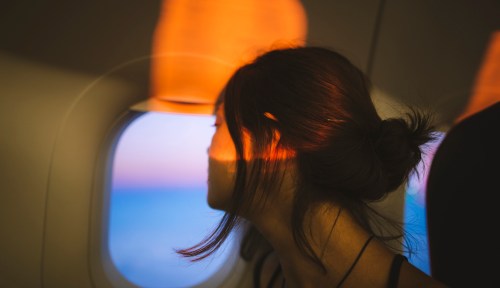Contrary to popular belief, burnout isn’t reserved for folks who don’t like their job; it also happens to people who love what they do and can even occur for reasons that have nothing to do with work, as is the case with caregiver and marital burnout. It stands to reason, then, that all people might benefit from learning creative ways for treating and, better yet, preventing this condition from happening in the first place. Cue: microvacations, which can ease and perhaps eliminate the risk of burnout by giving you more control of your schedule and helping you disconnect from the cause(s) of your stress.
Experts in This Article
Hana Jung is a clarity and mindset coach as well as the founder of Re:Boot Experiences.
founder of Soulcation, a company focused on helping people take breaks from work to rejuvenate and practice self care
The notion of microvations being adept at preventing burnout was part of a bigger discussion during this week’s episode of The Well+Good Podcast, which focused more generally on the power of accessing a vacation mindset without traveling. “I don’t really take [a] dedicated vacation because I integrate a lot of space and time to shut off,” clarity and mindset coach Hana Jung said during the episode, which also featured life and career coach Melody Miles, founder of wellness-focused sabbatical-planning company Soulcation. “I guess my version of vacation is, like, microvacations.”
Listen to the full episode here.
Reasons abound why many folks may be unable to take dreamy and rejuvenating weeklong vacations to faraway locales—like finances, work responsibilities, caregiving responsibilities, and beyond—which is exactly why taking microvacations might be a good alternative for preventing burnout. And the good news for all those busy and otherwise strapped folks is that taking a microvacation doesn’t require actually going anywhere or spending much (if anything at all). This way, concerns about finances and time are less stressful to contend with, but you’re still putting time and space between you and the source of your burnout when you take one.
Read on to learn Jung’s three tips for planning a microvacation.

Microvacations can prevent burnout, so here are three tips for planning yours
1. Schedule a “boredom day”
In her personal life, Jung likes to schedule what she calls “boredom days,” which essentially refers to clearing her schedule and doing only what she wants to do on that day. “A complete boredom day is unstructured playtime, like you would give yourself when you were a child,” says Jung. “I make no plans with anybody. I wake up when I want. I feel into what I’m craving that day—just like you would [during] vacation.”
On a “boredom day,” Jung says, you might enjoy taking a walk, hanging out with friends, reading a book, or just lounging around. The key here is to allow yourself a day where you don’t have any plans or commitments. Jung adds that she schedules this time to rest because she knows that not doing so may lead to her not actually getting to it. “It’s very easy for work to creep into your personal time, and you have to hold that boundary pretty rigidly,” she says.
2. Be mindful when selecting your space for a microvacation
In terms of relaxing situations, not all spaces are created equally. This is particularly true for folks who work remotely and have blended personal and professional spaces as a result. “When you’re in an environment that doesn’t trigger a sense of relaxation or doesn’t trigger reminders to rest, it could feel very go, go, go,” Jung says. “Sometimes, I have busy work days, and it’s hard for me to step out of that computer-screen mindset.” As a solution to this problem, Jung has designated her bedroom as a space only for sleep and rest—no work allowed.
“I will either find a café or even step outside my door and work from the porch if I need to dedicate that space for work,” she says. “And then everything outside of [that] is considered vacation and personal time,” which allows you to create (and hopefully abide by) physical boundaries in terms of work-life balance.
3. Consider your body, mind, and spirit
This tip gets to the sensory elements that make a vacation great, which are also applicable when you’re taking a microvacation to prevent burnout. “When you’re on vacation, you’re trying different foods, you’re smelling amazing things,” says Jung. “If you don’t give yourself that variety or don’t invite that in, it’s really hard for you to kind of take yourself out of your day-to-day.”
The wonderful reality about this tip is that you can try different foods and surround yourself with pleasant scents even if you’re not on a tropical beach somewhere. For instance, Jung loves to use lavender to signal to herself that the day is done.
No matter how realistic the notion of vacations or even microvacations are for you (but, seriously, give microvacations a chance!), remember to be kind to yourself and give yourself grace. Doing so can be helpful for facilitating a burnout-busting mindset.
Oh hi! You look like someone who loves free workouts, discounts for cutting-edge wellness brands, and exclusive Well+Good content. Sign up for Well+, our online community of wellness insiders, and unlock your rewards instantly.
Sign Up for Our Daily Newsletter
Get all the latest in wellness, trends, food, fitness, beauty, and more delivered right to your inbox.
Got it, you've been added to our email list.











